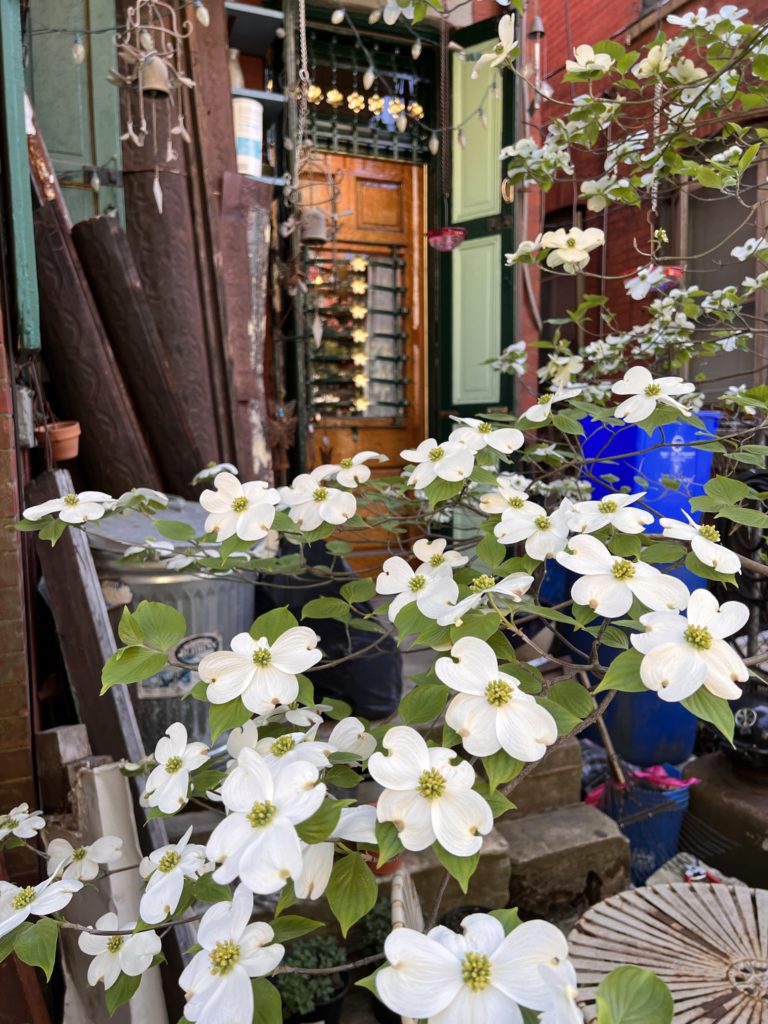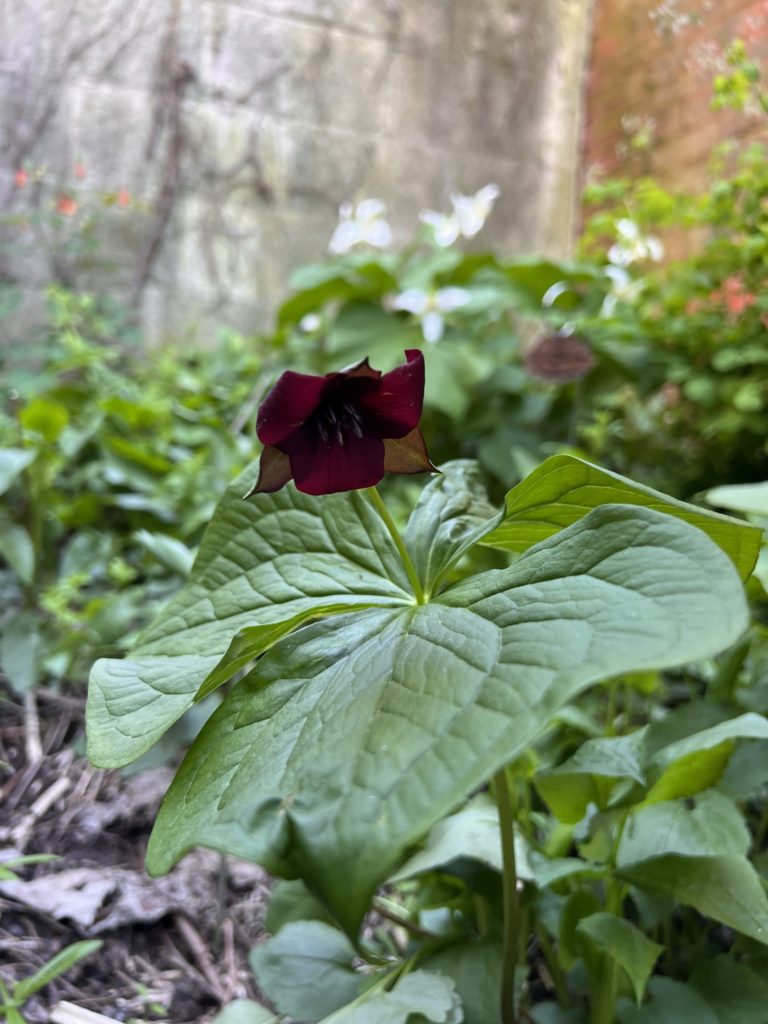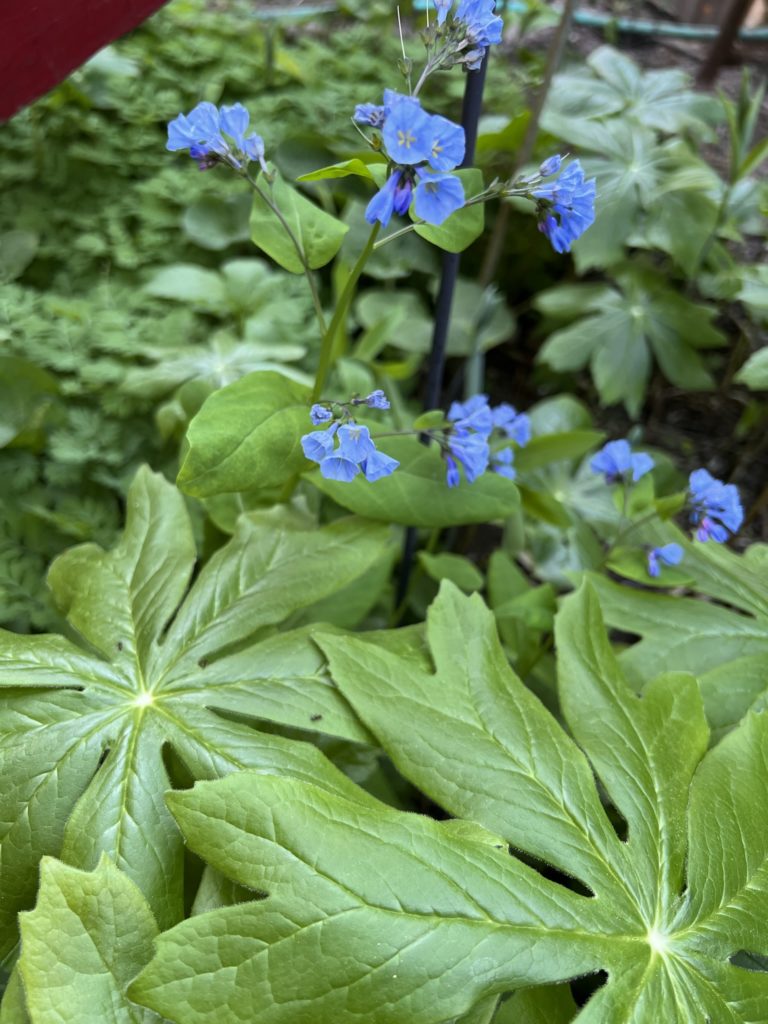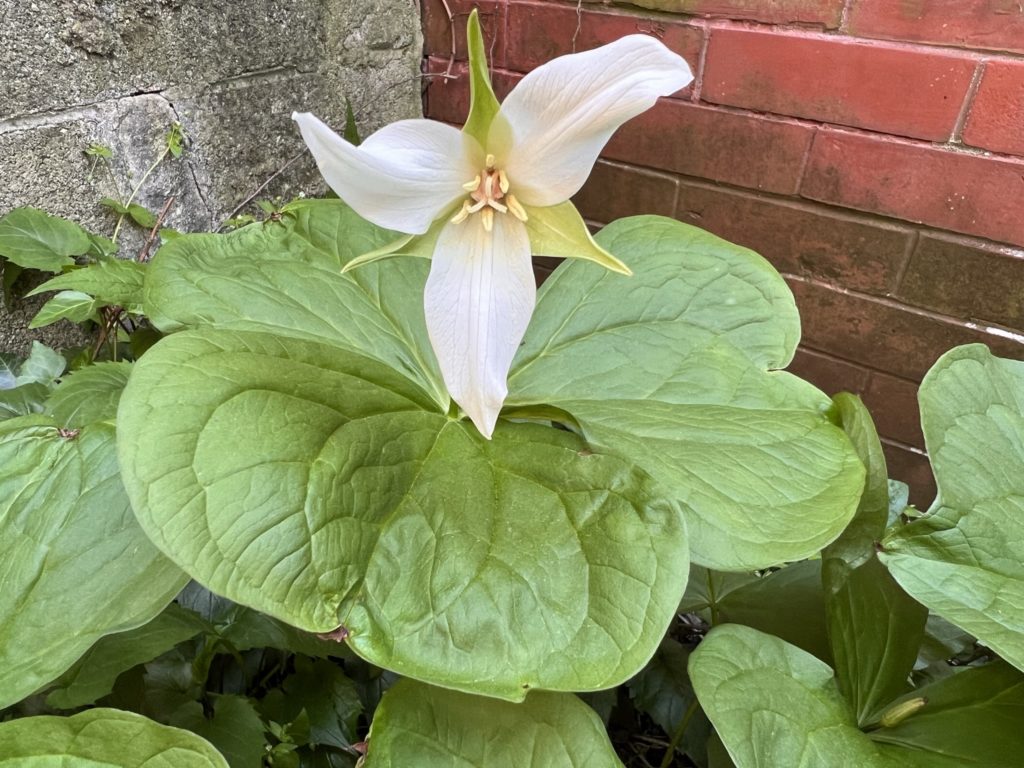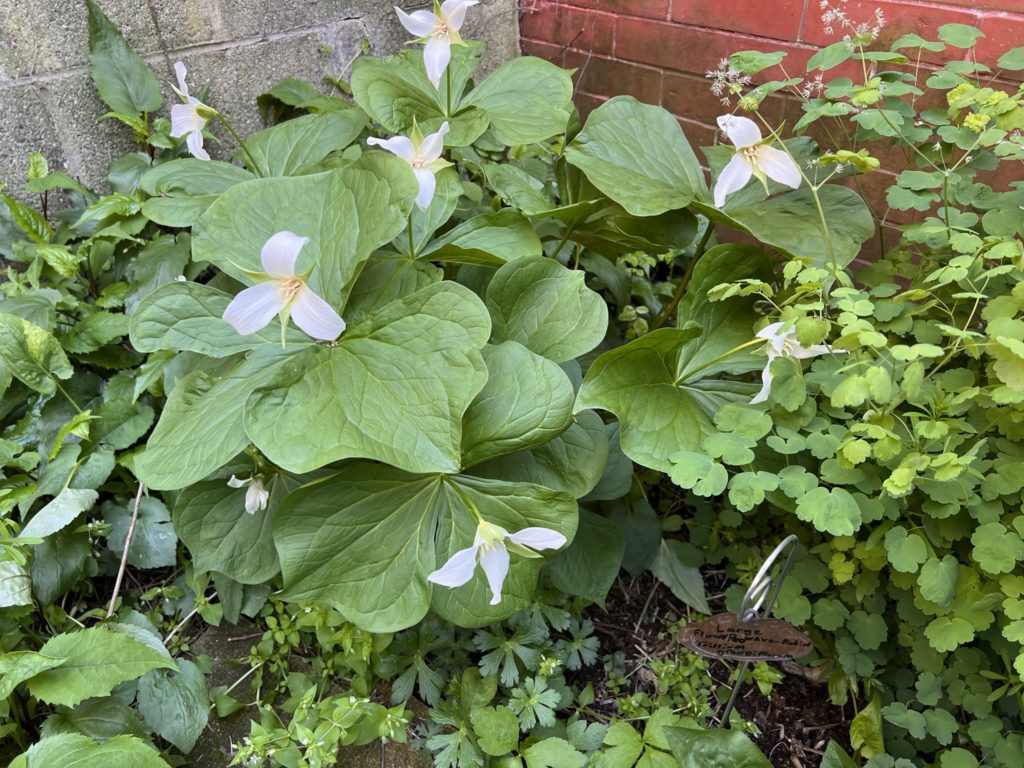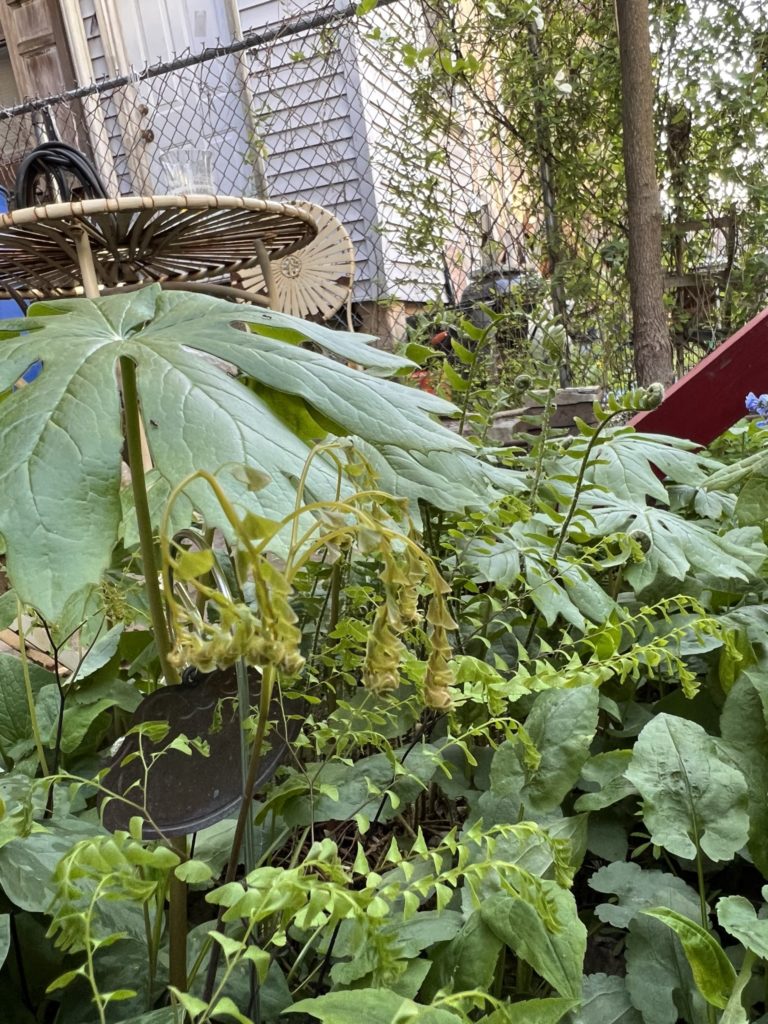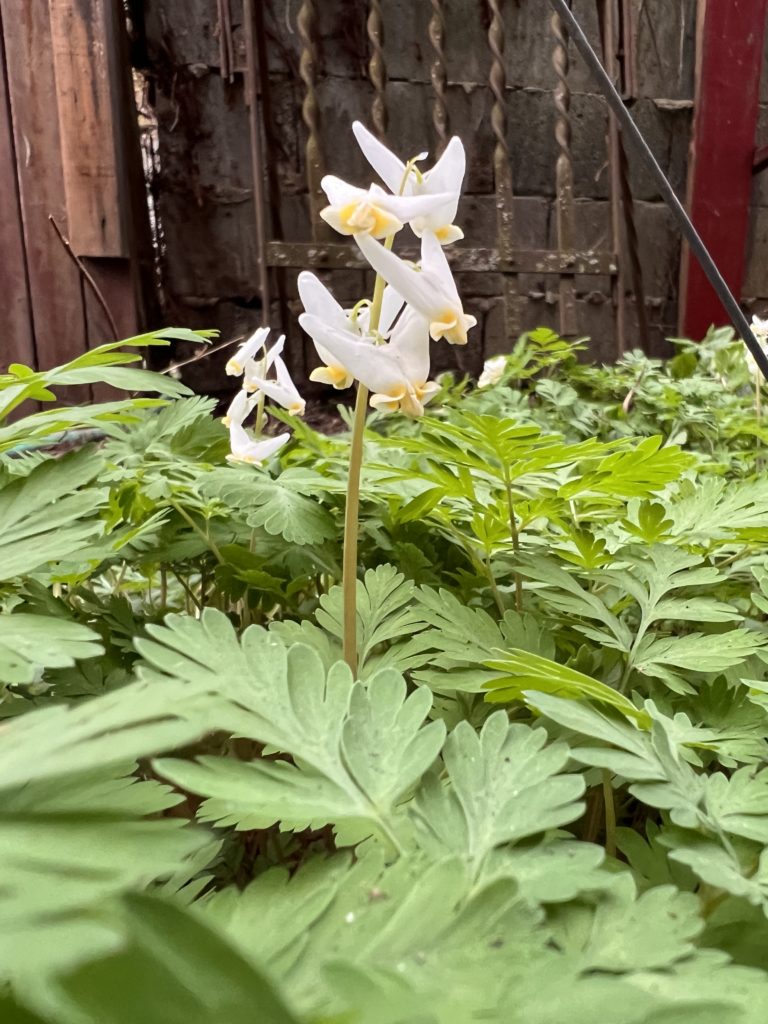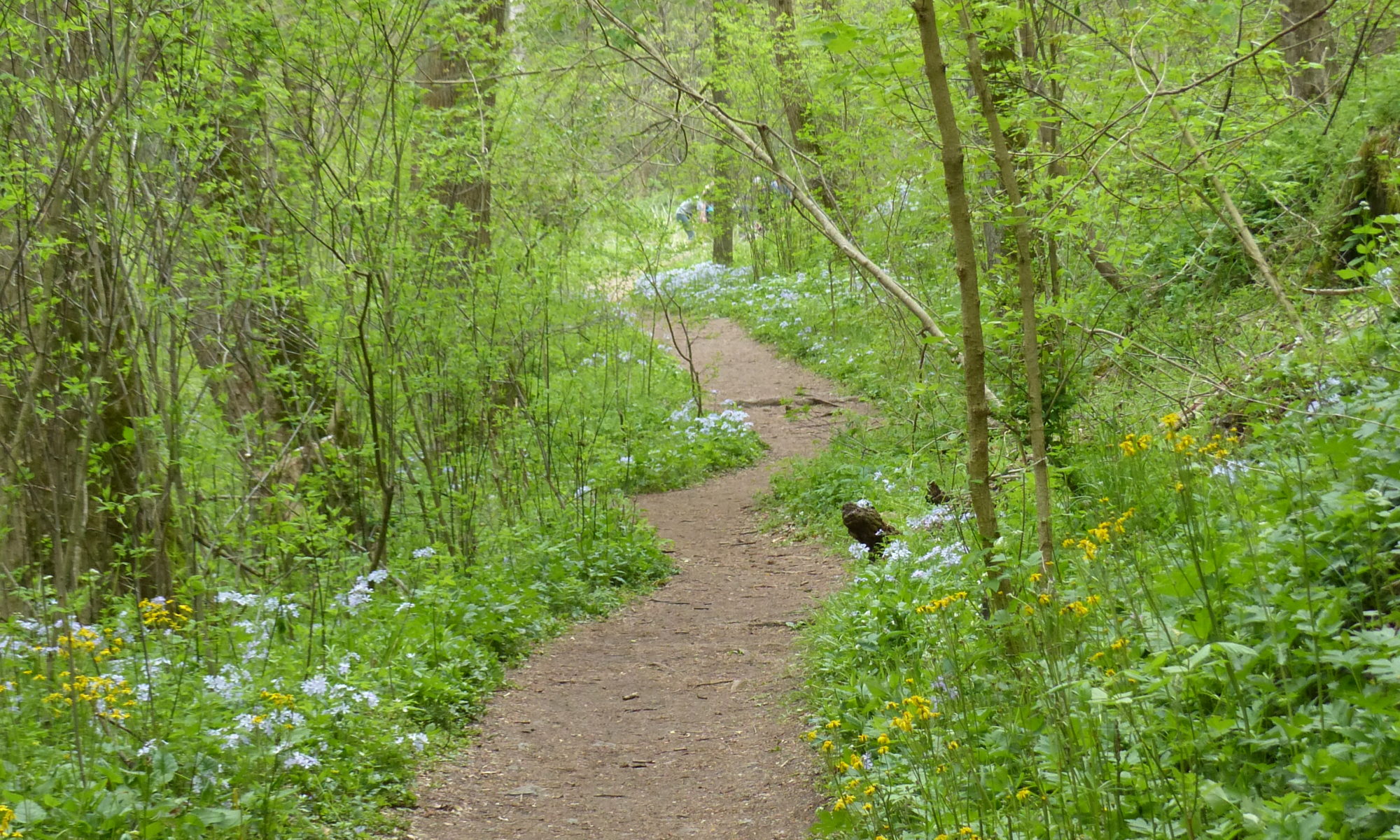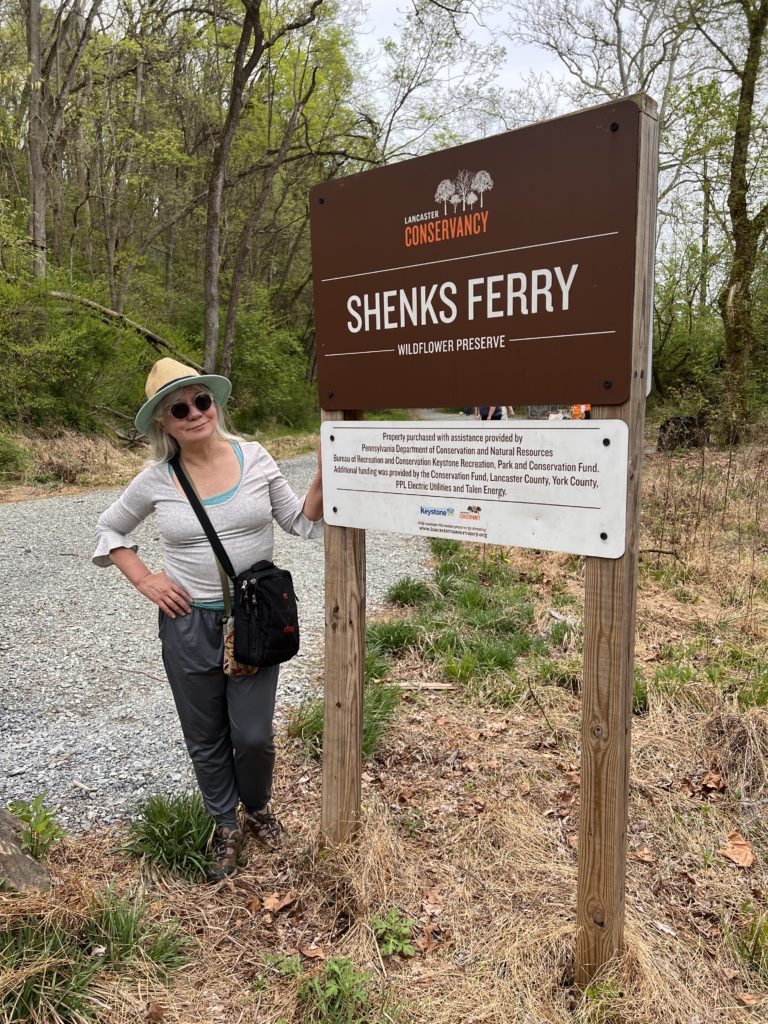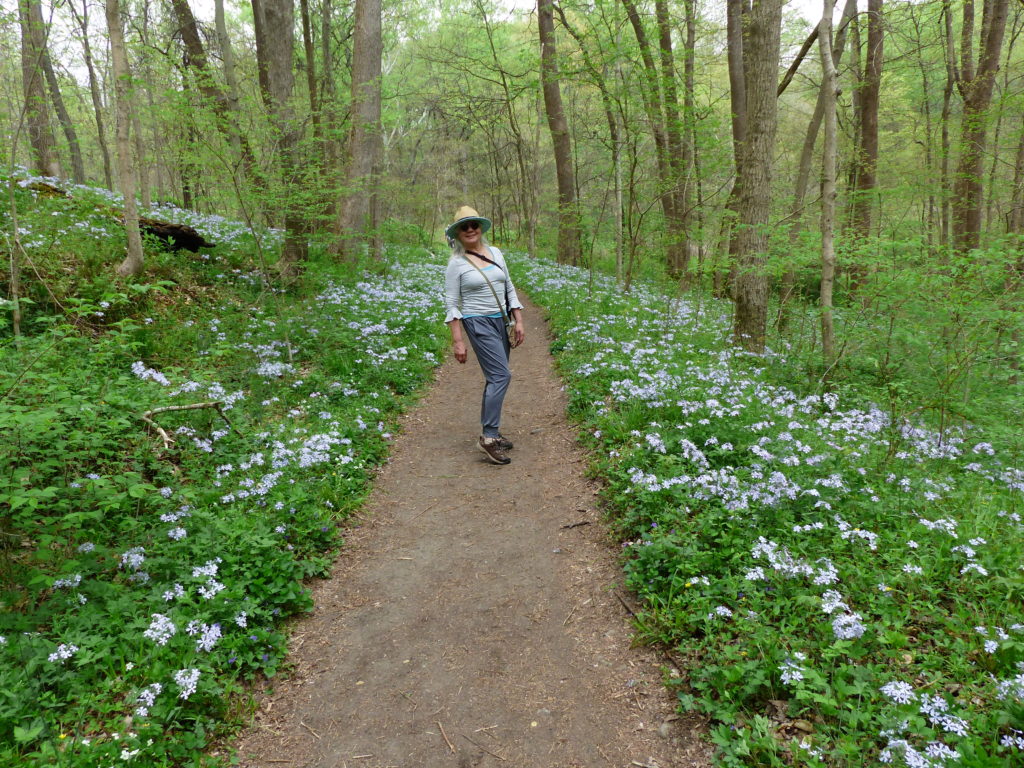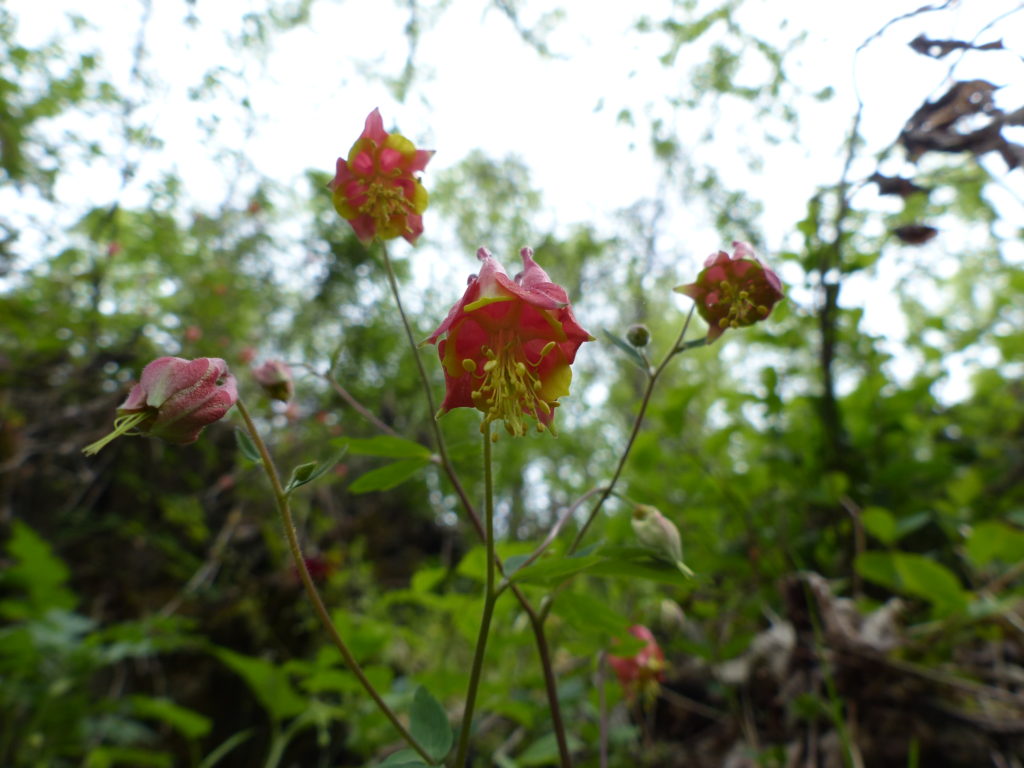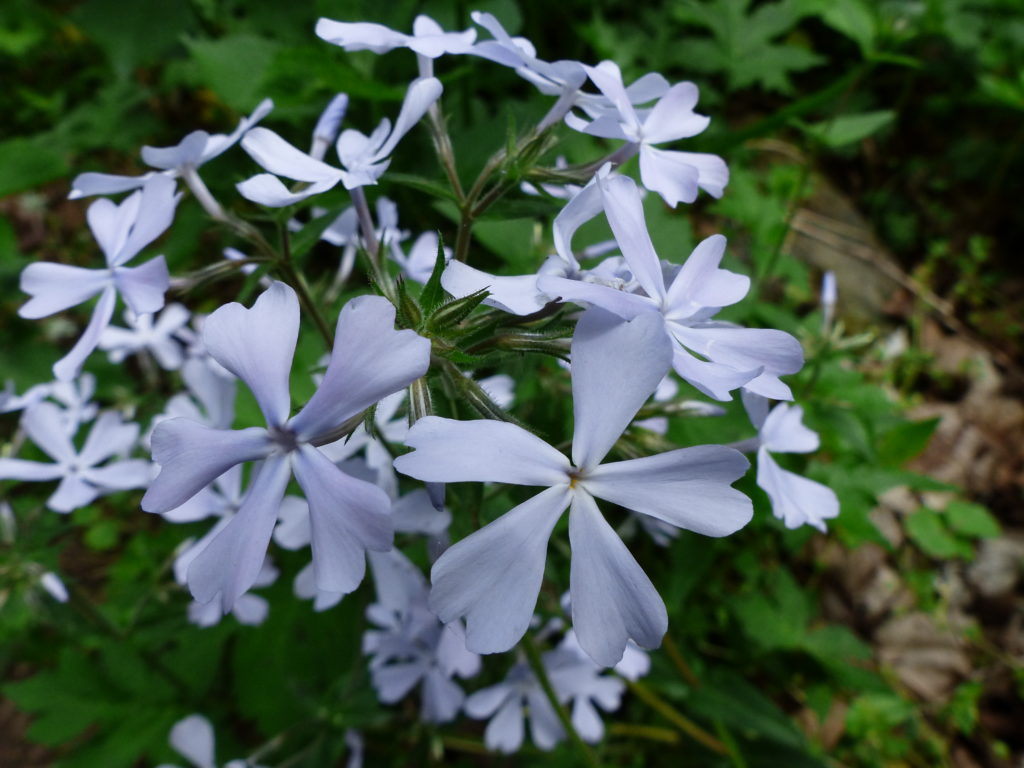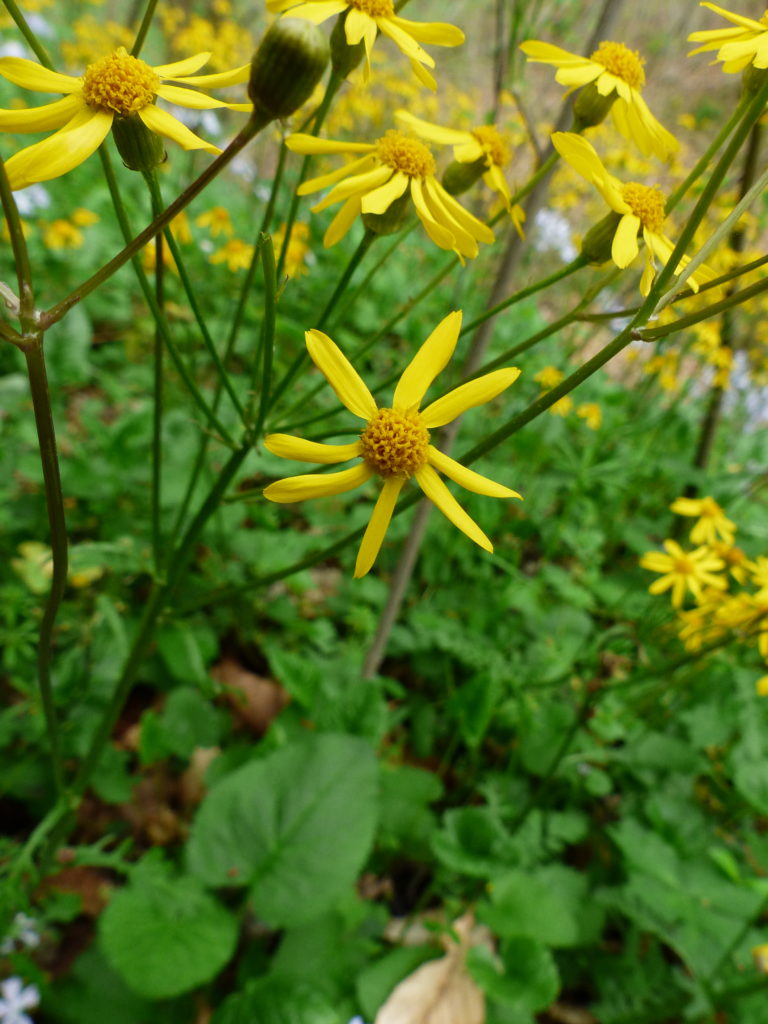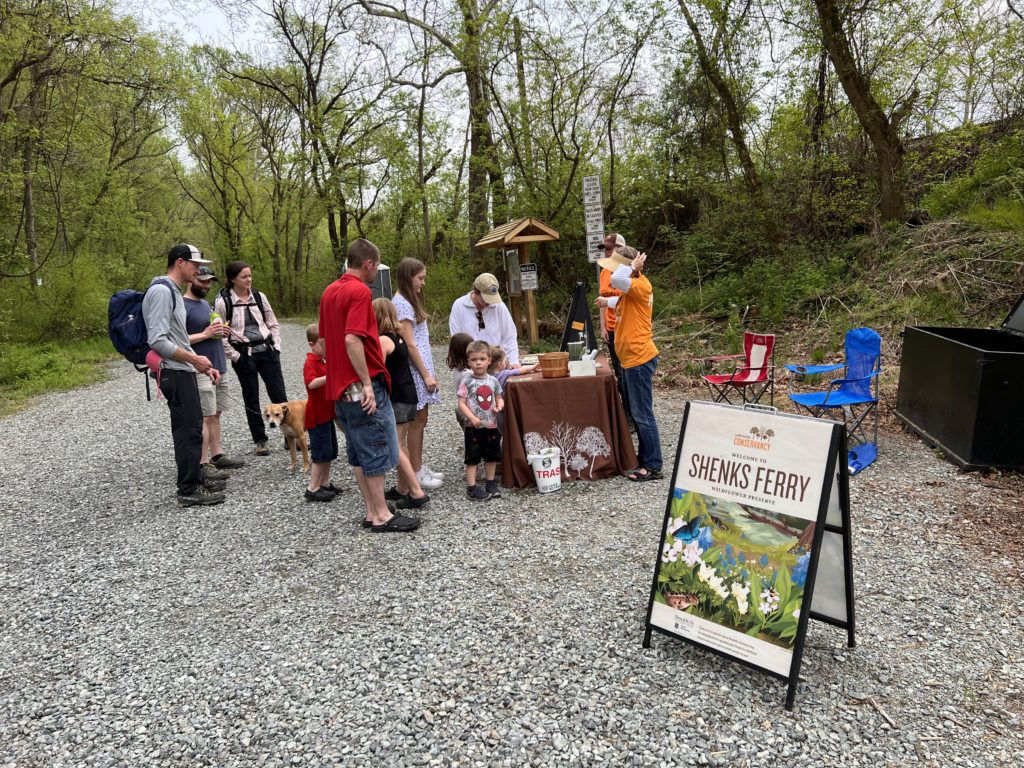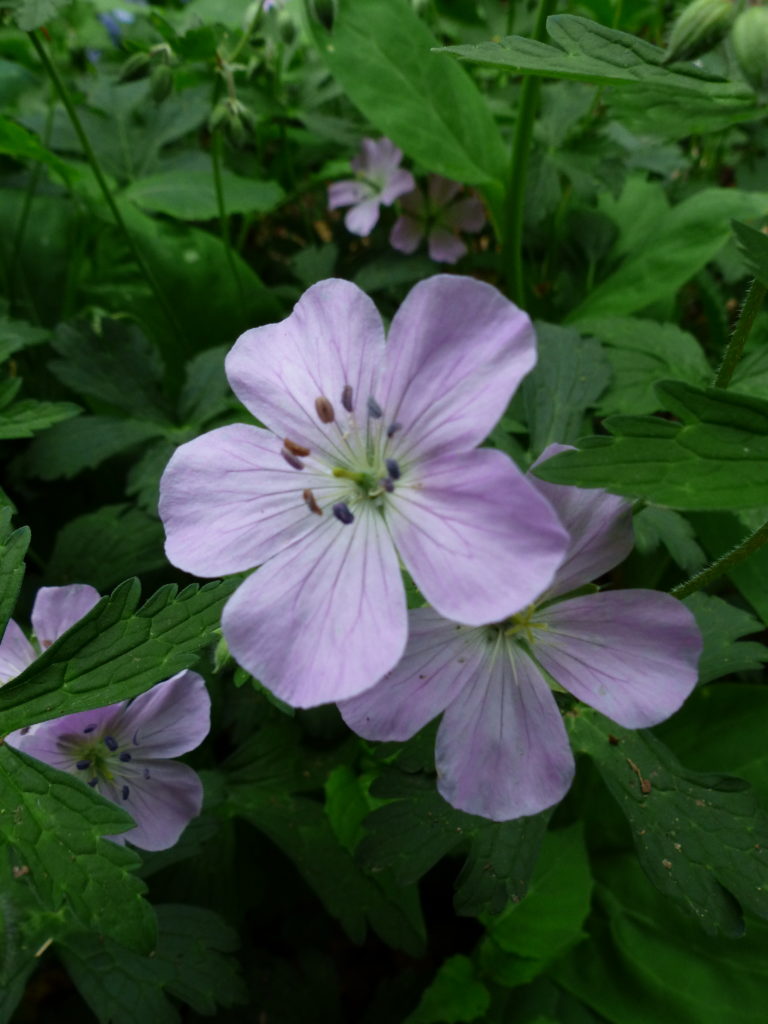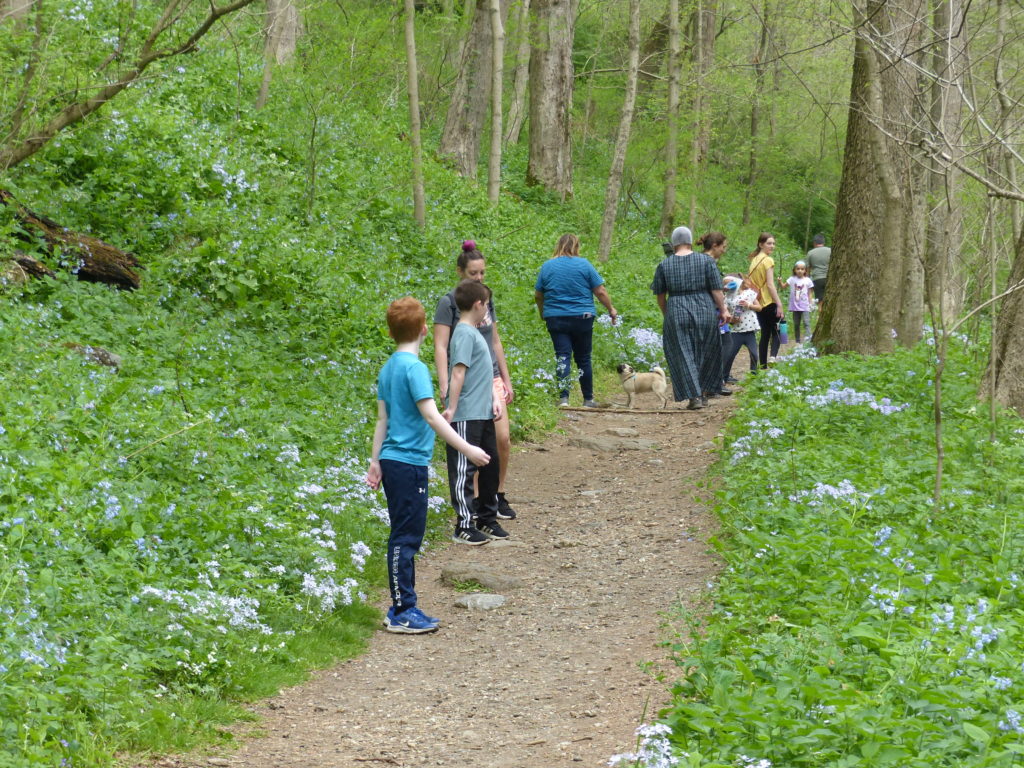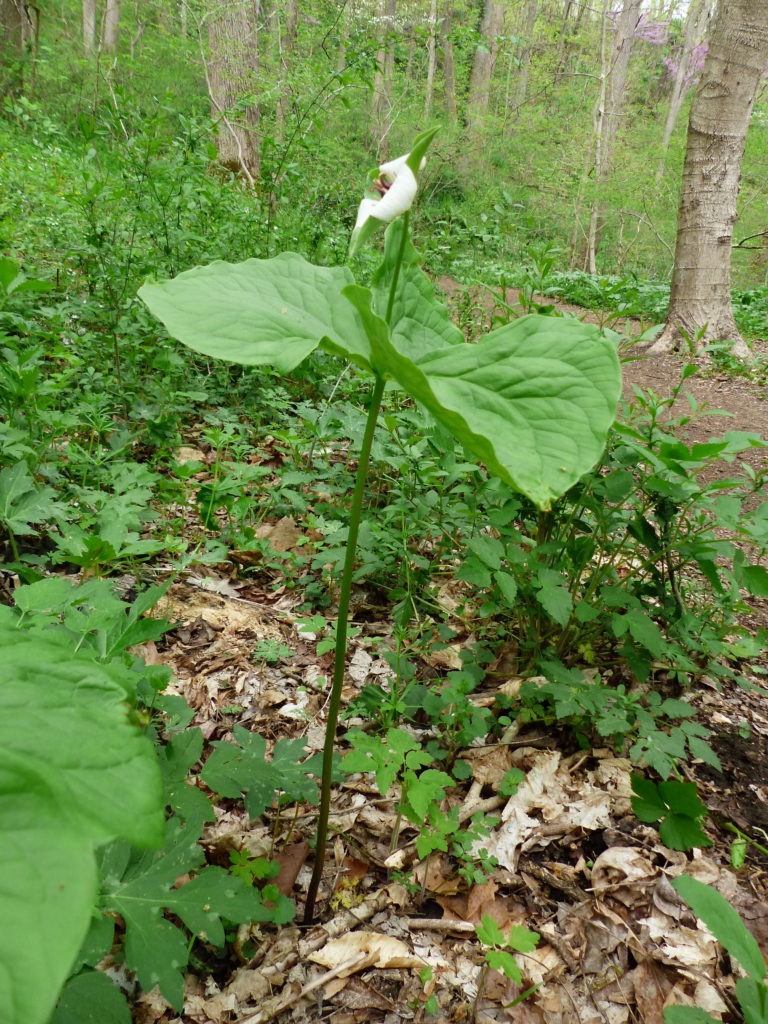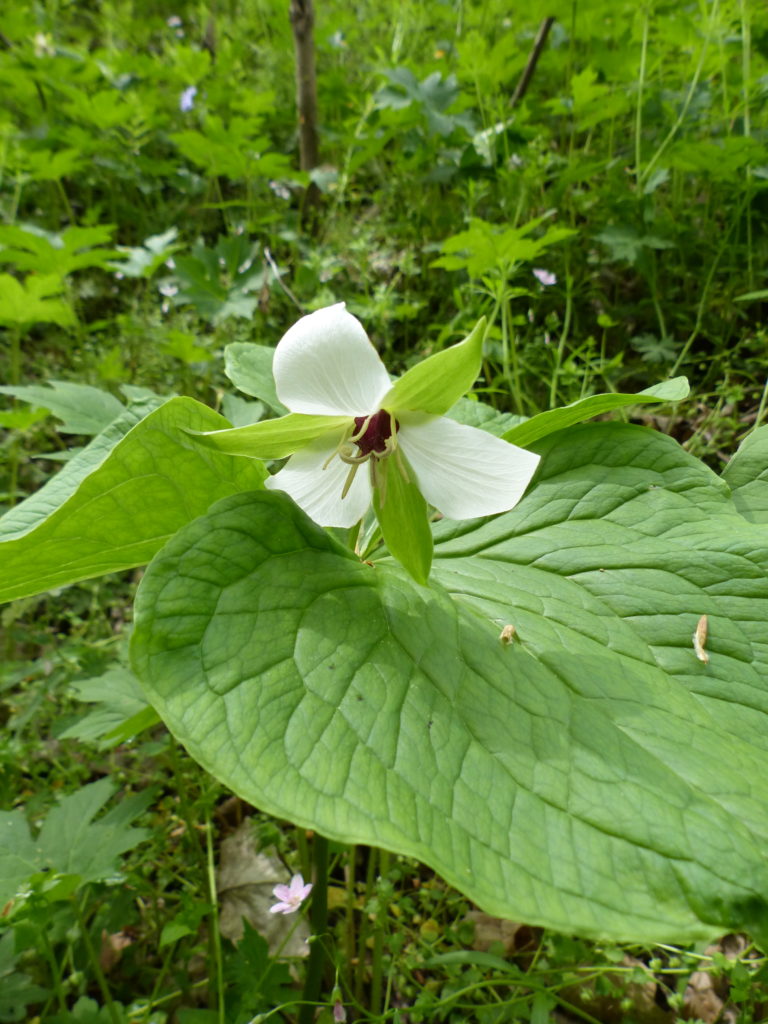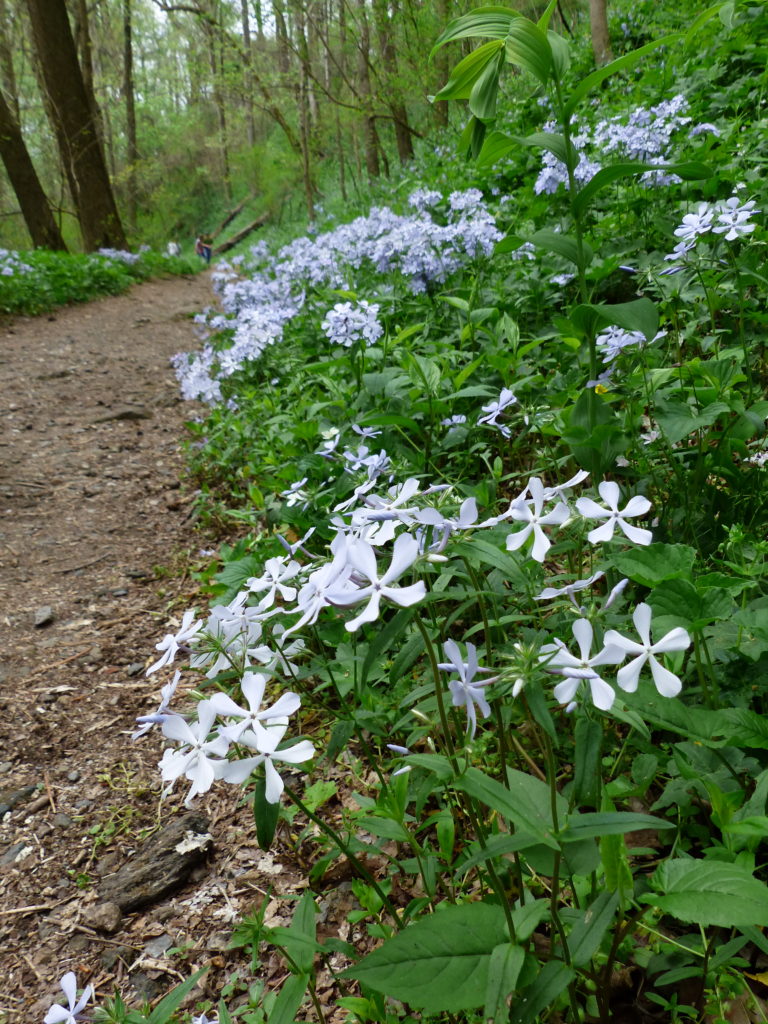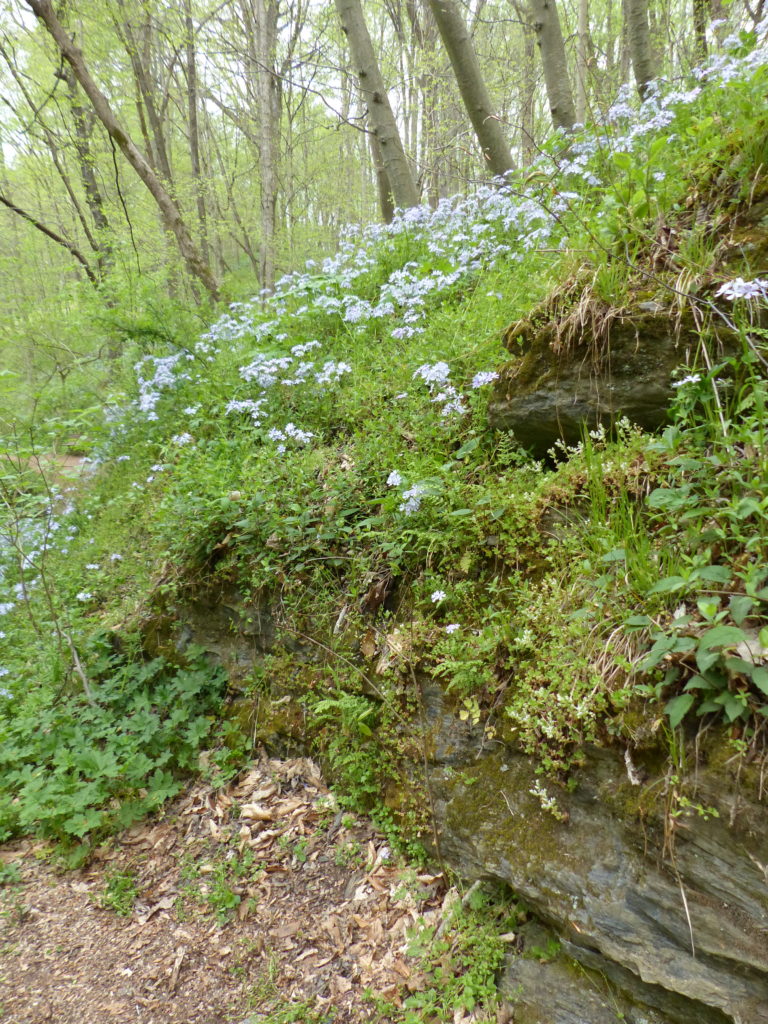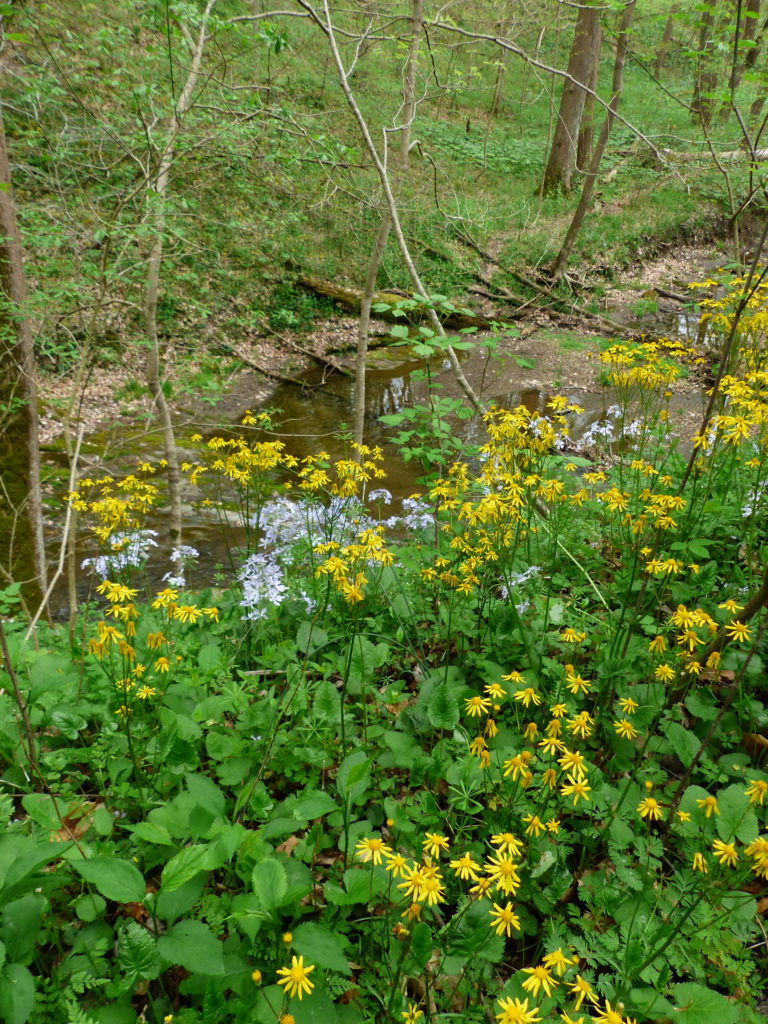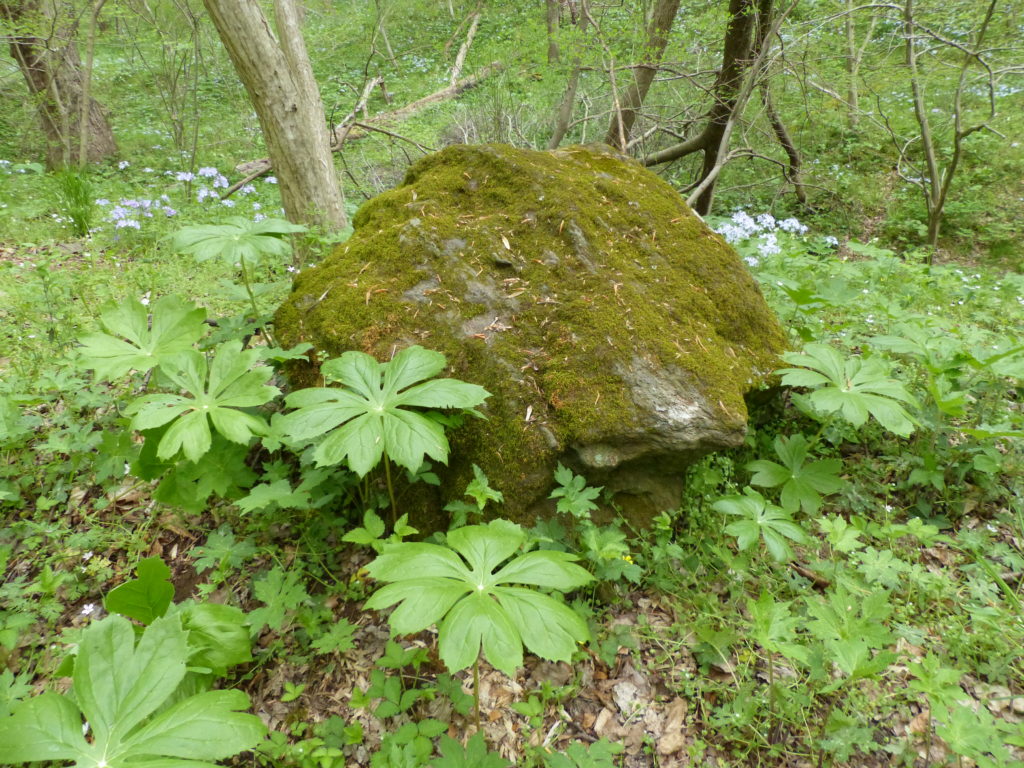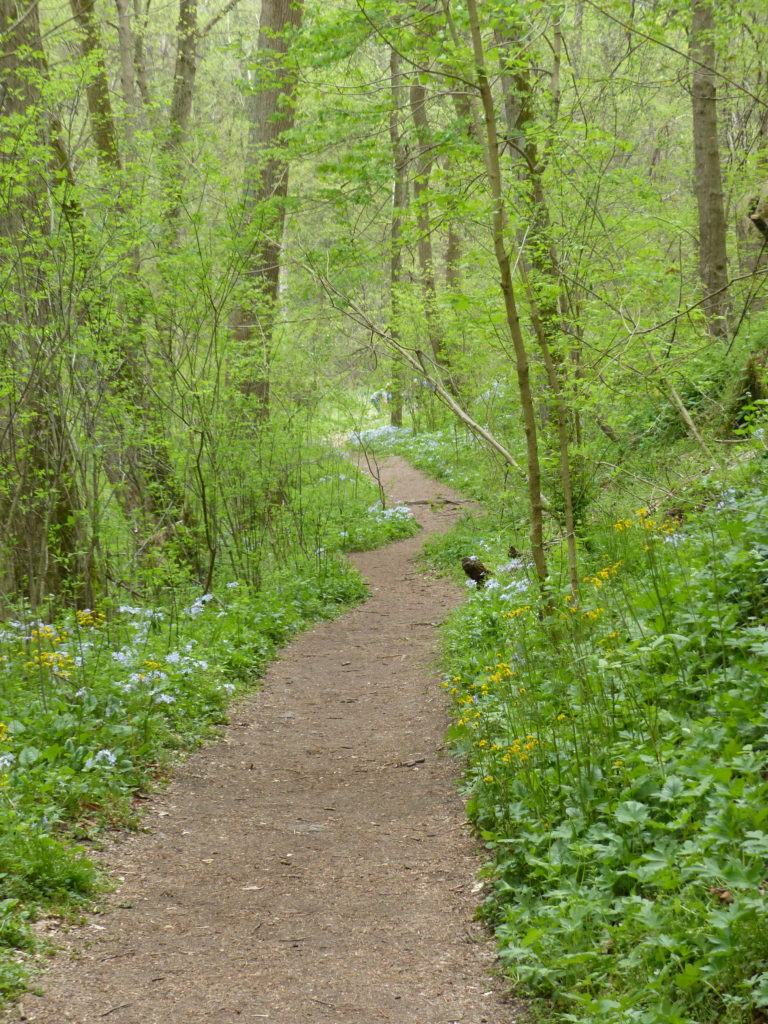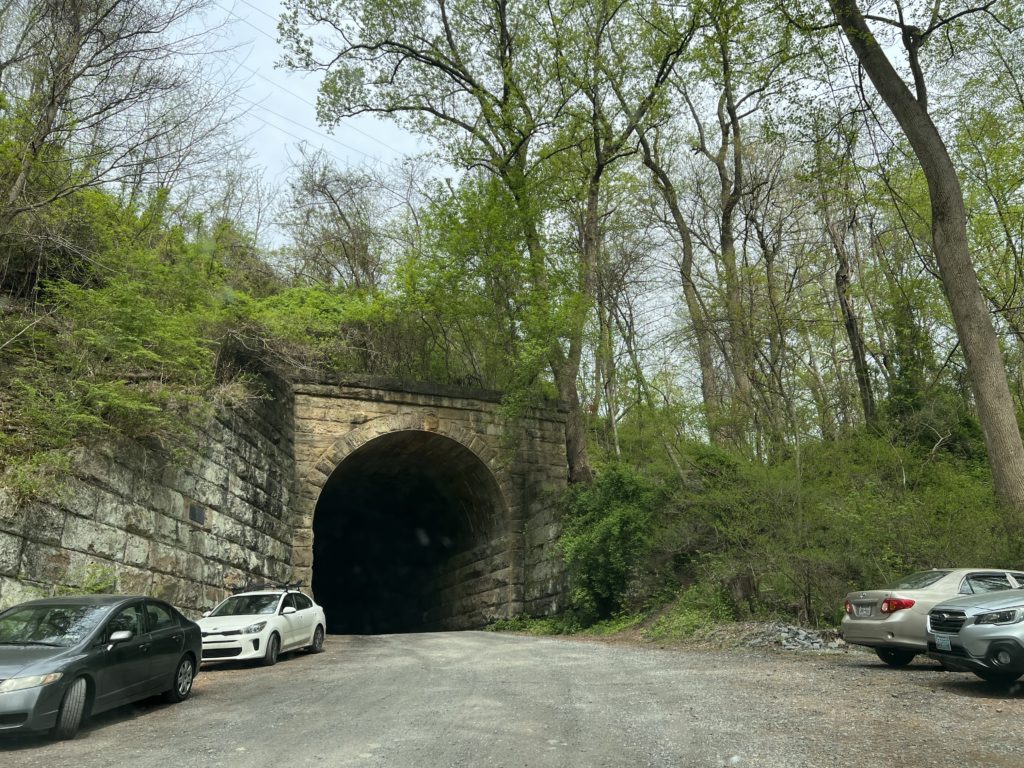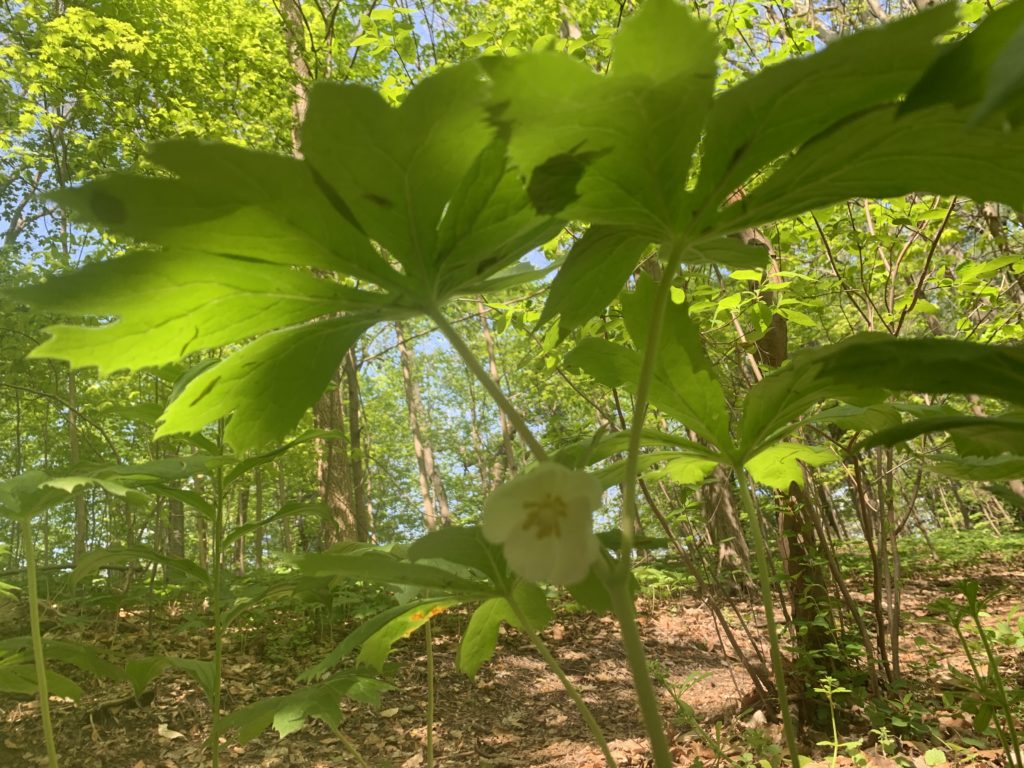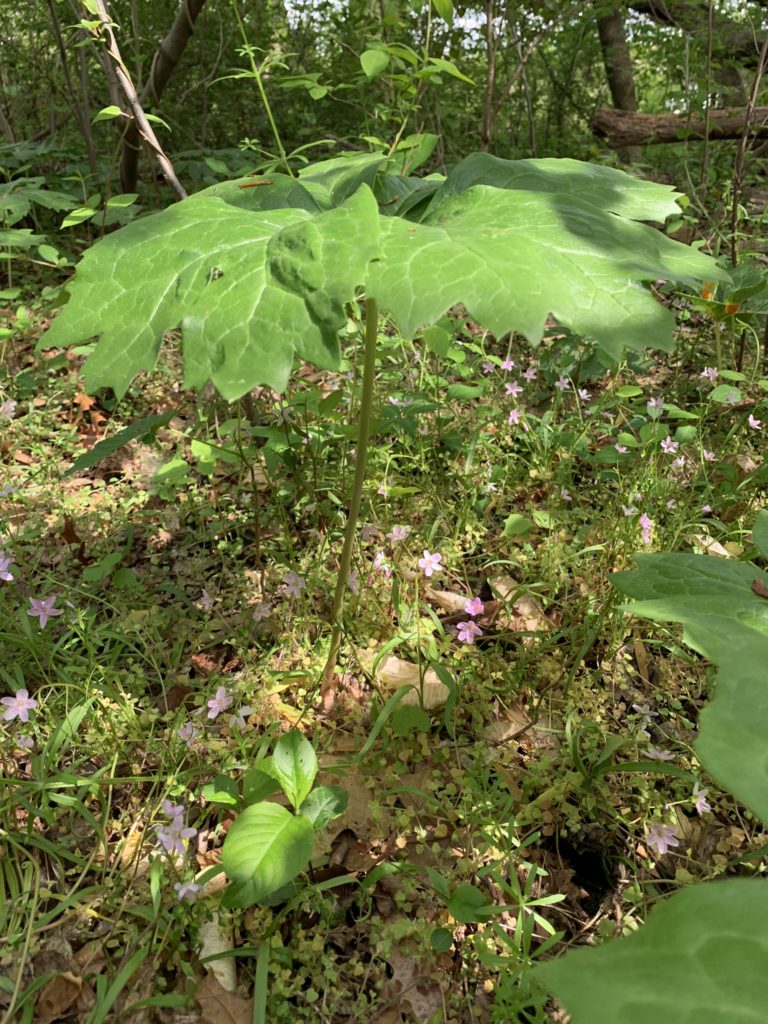Our tiny West Philadelphia rowhouse backyard garden is about 13 feet wide and 6 feet deep. The other areas of our backyard are concrete drainage areas, steps, and concrete walkways. Much of the concrete infrastructure is to protect the foundation from water infiltration and flooding and subsequent structural damage, very common in poorly maintained urban rowhouses.
We wanted our tiny backyard plot to be a miniature West Fairmount Park foremost and also a miniature version of a Southeastern Pennsylvania woodland. We consulted the book The Vascular Flora of Pennsylvania: Annotated Checklist and Atlas by Rhodes and Klein, to guide us through our plant decisions.
Because of the height of the house and the surrounding buildings, and the small size of the garden plot, we chose Cornus florida, the understory tree Dogwood, also because of the morning sunshine and afternoon shade, which this species prefers. The very well protected garden with masonry walls all around mimic the Lower Susquehanna ravines we love to visit, and even some well protected Schuylkill River Ravines, featuring Trilliums, which thrive in these deep ravines with steep slopes. Our Trillium Grandiflorum and Trillium erectum are thriving in our back yard!
In keeping with creating a miniature West Fairmount Park Spring Woodland, we have Mayapples, Podophyllum peltatum, Christmas Fern, and Solomons Seal.
Another plant that loves very protected environments with some degree of alkaline soils is Maidenhair Fern, which also thrives in our yard! My theory is that all of the brickwork around our yard has contributed to the soil alkalinity, being that the mortar used in making brick walls is composed of the alkaline lime. Check out the pictures below and see all of the plants growing in our yard that we are discussing. I took all of these pictures in the past week! Look forward to our Summer and Fall Philadelphia rowhouse backyard series!
